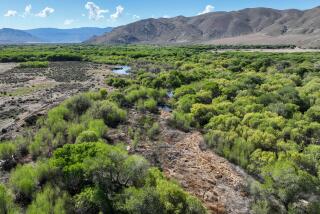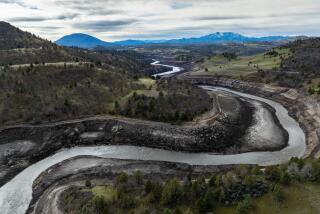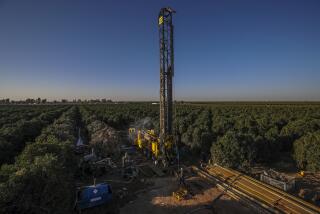Restored wetlands no match for real thing
How easy is it to recreate nature? When it comes to wetlands, the answer seems to be ânot very.â
A new paper examining data from more than 600 restored or man-made wetlands found that in key ways, they donât measure up to the real thing.
Wetlands perform vital ecosystem functions. They act as fish nurseries, control erosion, clean up water, store carbon, and provide wildlife habitat. But they have been filled, drained and paved over at a steady pace, prompting efforts to restore them in California and across the nation.
The study, published in the January issue of PLoS Biology, raises questions about the ultimate success of those projects.
âItâs much better to protect what we have now than to keep degrading it and put in the kind of substitutes that are not going to recover in many, many years. Or they are not going to recover ever,â said David Moreno-Mateos, the studyâs lead author.
Now a restoration fellow at Stanford Universityâs Jasper Ridge Biological Preserve, he conducted the work while a postdoctoral fellow at UC Berkeley.
Moreno-Mateos and his three co-authors analyzed biologic measurements from 401 wetlands restored at their original sites and 220 newly created ones. They then compared the results with values from natural wetlands in similar locations.
They found rehabilitation projects quickly revived hydrologic functions. But compared with natural, undisturbed sites, carbon and nitrogen levels and the accumulation of soil organic matter were significantly less, as were the variety and abundance of native plants.
In some disturbed wetlands that had been allowed to recover on their own, native plant communities hadnât fully returned to normal even after a century.
Wetlands appeared to respond more quickly to restoration efforts if they were larger than 250 acres, were located in a temperate climate, or exposed to large natural flow variations in tidal or river environments.
Most of the research surveyed by the authors was from U.S. wetlands, but the authors also reviewed international studies. Because nearly half of the data were from young restoration projects, Moreno-Mateos said the results should be cautiously interpreted. âWe need more long-term monitoring to really know what is happening.â
RELATED:
California OKs $6.5 million to plan Ballona Wetlands restoration
Nationâs wetlands continue to disappear
Playa Vista Phase 2 approval upheld by state appeals court







